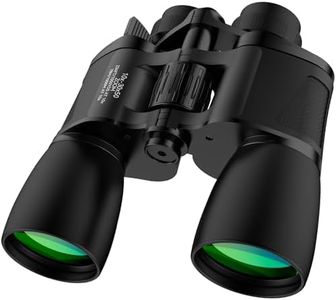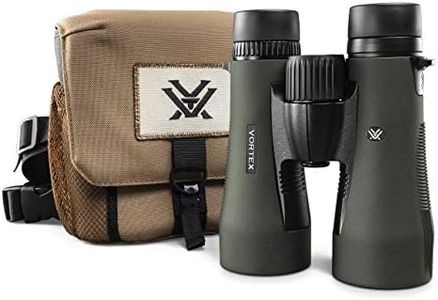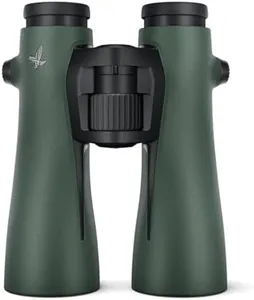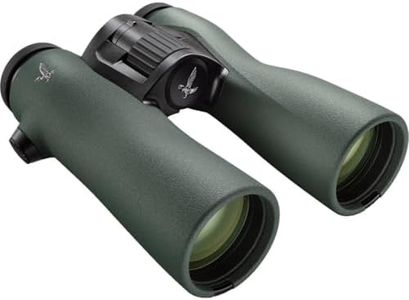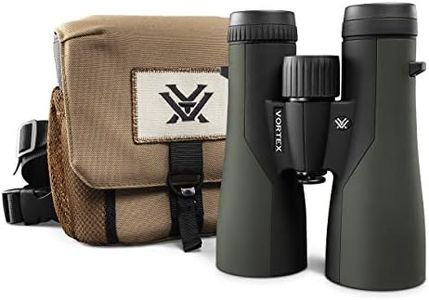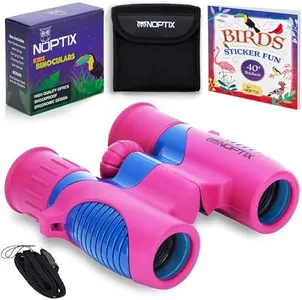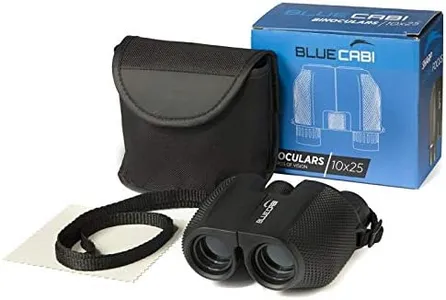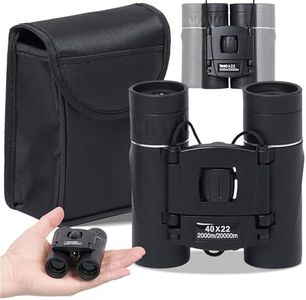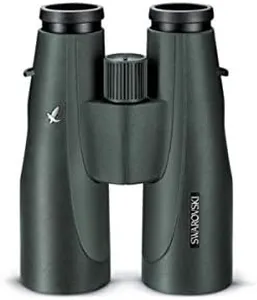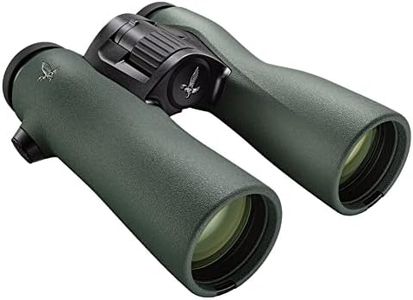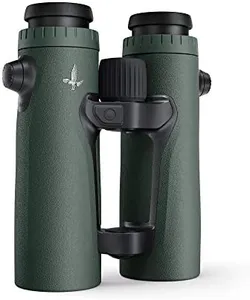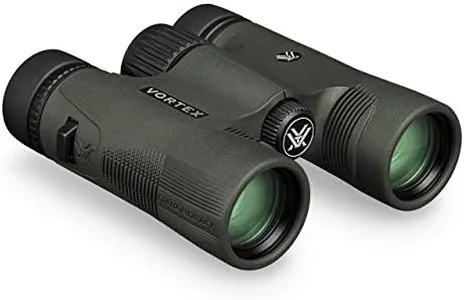10 Best Astronomy Binoculars 2025 in the United States
Our technology thoroughly searches through the online shopping world, reviewing hundreds of sites. We then process and analyze this information, updating in real-time to bring you the latest top-rated products. This way, you always get the best and most current options available.

Our Top Picks
Winner
Vortex Optics Diamondback HD 10x50 Binoculars - HD Optical System, Non-slip Grip, Waterproof, Fogproof, Shockproof, Included GlassPak - Unlimited, Unconditional Warranty
Most important from
10231 reviews
The Vortex Diamondback HD 10x50 binoculars are well-suited for astronomy enthusiasts who want a solid combination of clarity, brightness, and durability. With 10x magnification and large 50mm objective lenses, these binoculars gather plenty of light for clear, sharp views of the night sky, making it easier to see stars, planets, and moon details. The high-quality HD glass and special coatings help reduce color blur and improve brightness, which is important for low-light conditions typical in astronomy. The fully multi-coated lenses and dielectric prism coatings also enhance light transmission, giving you brighter and more color-accurate images.
On the ergonomic side, the binoculars feature twisted eyecups to comfortably accommodate eyeglass wearers, a smooth central focus wheel, and a diopter adjustment for fine-tuning vision differences between eyes. The rubber armor ensures a secure, non-slip grip and adds shock resistance—useful when handling outdoors at night. These binoculars are waterproof and fogproof thanks to argon purging and sealed construction, so you can trust them in damp or cold conditions without worrying about lens fogging.
Weighing just under 2 pounds, they are fairly portable but may feel a bit heavy for extended handheld use during long observation sessions, though tripod adaptability helps with this. The lifetime VIP warranty is a nice bonus, ensuring long-term support. If you want a reliable, bright, and sharp pair of binoculars for casual to moderate astronomy use, these provide great value and durability.
Most important from
10231 reviews
SWAROVSKI OPTIK NL Pure 14 x 52 Binoculars with Swarovision Technology (Green)
Most important from
138 reviews
The SWAROVSKI OPTIK NL Pure 14 x 52 binoculars are a high-end choice for astronomy enthusiasts and bird watchers who need clear, sharp views even in low light, like at dawn or dusk. Their 14x magnification combined with a 52 mm objective lens lets in plenty of light, which is crucial for seeing faint stars and distant wildlife clearly. The use of Swarovision technology and field flattener lenses ensures images are razor-sharp and free from distortion, providing a crisp, realistic view.
Comfort is another strong point here—the unique wasp waist design fits nicely in your hands, making them easier to hold steady for long periods. These binoculars are also tripod mountable, which helps reduce shake during extended stargazing sessions. On the downside, the product is quite heavy at about 3.6 pounds, which might be tiring for some users during prolonged handheld use.
Although these binoculars come at a premium price, their build quality and image performance justify the cost for serious users. For those seeking a reliable, high-quality binocular for detailed observation in low light conditions and willing to handle the weight, this model is an excellent option.
Most important from
138 reviews
Swarovski NL Pure 10x42 Binoculars w/FSB Sidebag, Strap, Eyepiece, Lens Cover and Cleaning Kit 36010
Most important from
138 reviews
The Swarovski NL Pure 10x42 binoculars are a great choice for astronomy enthusiasts who want a clear and immersive viewing experience. With 10x magnification and a 42mm objective lens diameter, they offer a good balance between zoom power and light gathering, which is essential for stargazing. The wide field of view (339 feet at 1000 yards) helps you see larger sections of the sky or landscape without constantly moving the binoculars. Their advanced SWAROVISION lens coatings improve color accuracy and brightness, meaning stars and celestial objects appear more detailed and vibrant. The focusing mechanism is designed for smooth and easy adjustments, which is helpful if you plan to use these binoculars for long periods.
Magnesium construction keeps the binoculars both strong and lightweight (1.87 pounds), making them comfortable to hold and carry. The weight is somewhat higher than some other models, so they might feel a little heavy for casual or extended handheld use. While these binoculars are slip-resistant and robust, they come at a premium price, reflecting their high-quality optics and build. If you want top-notch image clarity and a wide view for astronomy or nature observation and don't mind investing in a premium product, these binoculars are worth considering.
Most important from
138 reviews
Buying Guide for the Best Astronomy Binoculars
Choosing the right astronomy binoculars can greatly enhance your stargazing experience. Unlike telescopes, binoculars are more portable, easier to use, and provide a wider field of view, making them ideal for beginners and casual observers. When selecting binoculars for astronomy, it's important to consider several key specifications to ensure you get the best fit for your needs. Understanding these specs will help you make an informed decision and enjoy the night sky to its fullest.FAQ
Most Popular Categories Right Now
